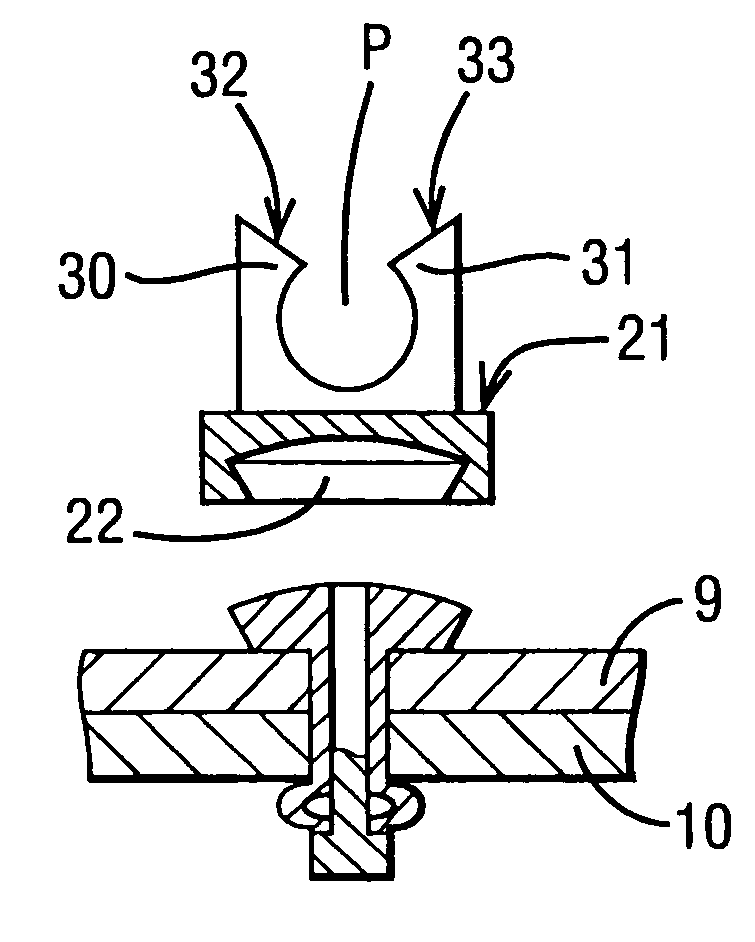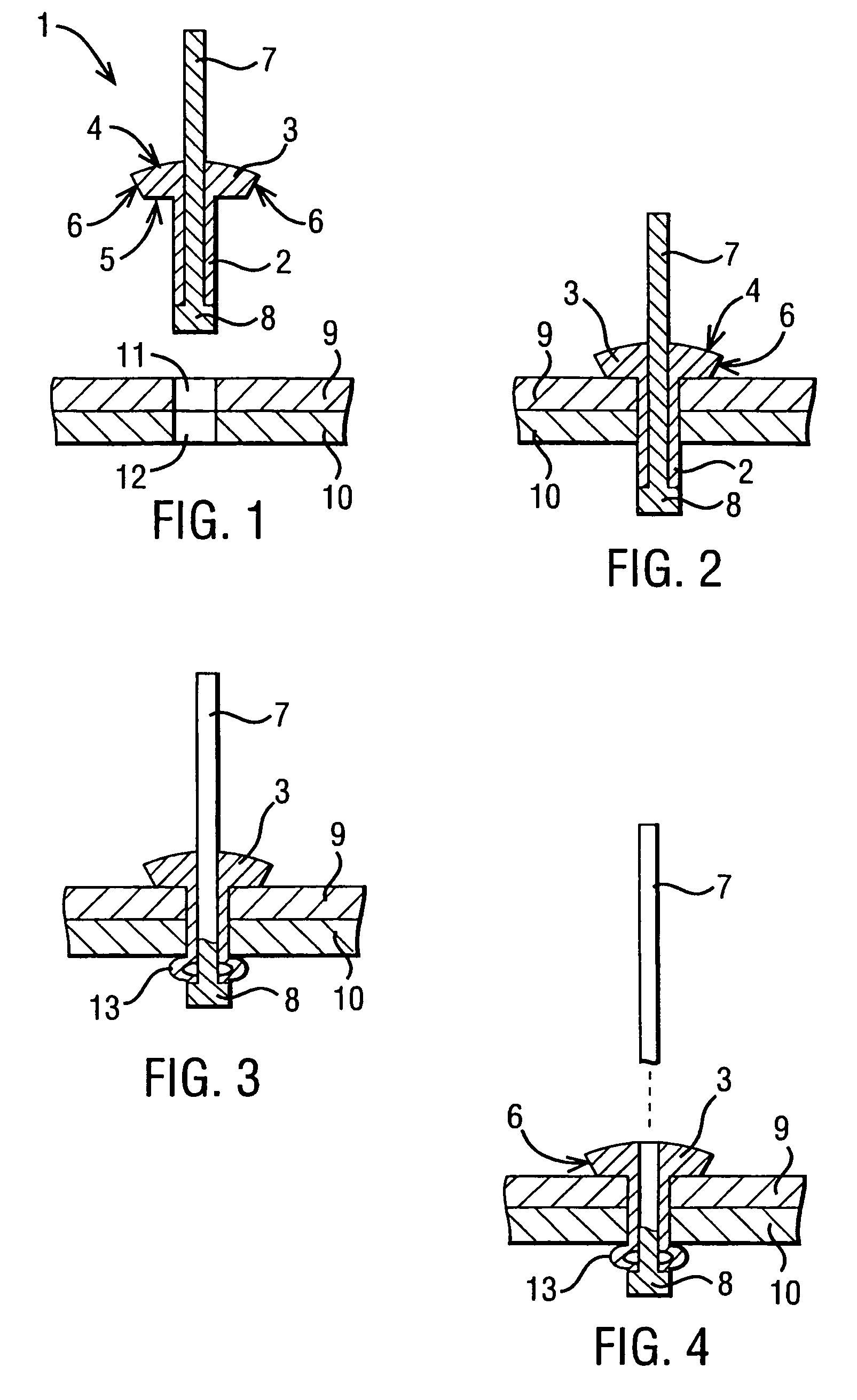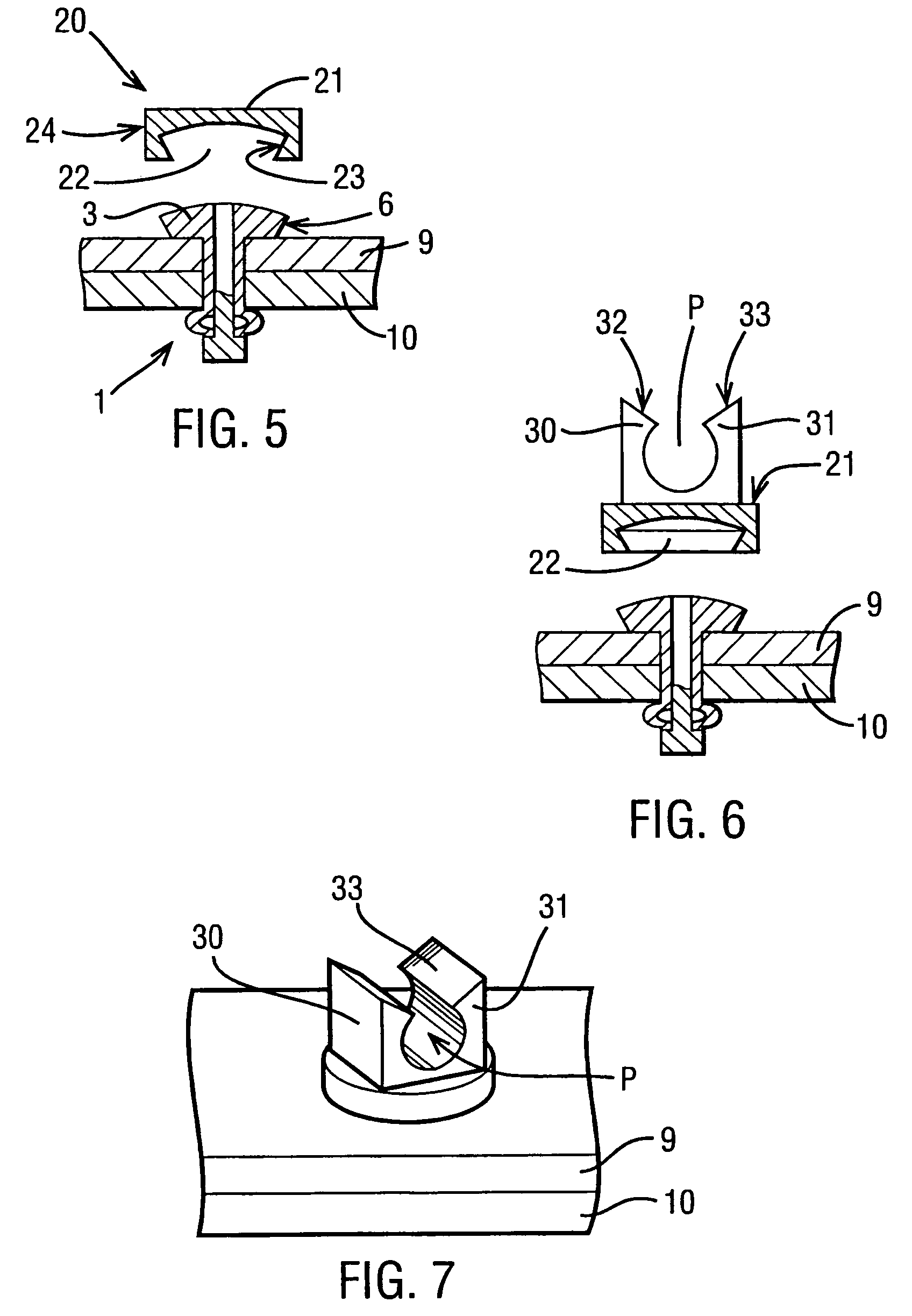Blind rivet
a blind rivet and rivet technology, applied in the field of fastenings, can solve the problems of additional components, additional labor, and additional fasteners, and achieve the effect of reducing the cost of sheet metal fabrication
- Summary
- Abstract
- Description
- Claims
- Application Information
AI Technical Summary
Benefits of technology
Problems solved by technology
Method used
Image
Examples
Embodiment Construction
[0022]Referring now to the drawings, FIGS. 1 to 4 show the setting sequence for the rivet. The rivet 1 comprises a tubular shank 2 at the upper end of which (as shown in the Figures) is a radially outwardly extending flange 3. The upper surface 4 of the flange 3 is domed, and the undersurface 5 of the flange 3 is planar and perpendicular to the tubular shank 2. The outer peripheral surface 6 of the flange 3 is tapered inwardly and downwardly in this embodiment, to provide a conical surface tapering towards the lower end of the rivet 1. A stem 7 extends through the tubular shank 2 and protrudes beyond the domed surface 4 of the flange 3. The stem 7 extends longitudinally through the tubular shank 2, and has a radially enlarged head 8 whose outer diameter is substantially equal to the outer diameter of the tubular shank 2, in contact with the end of the shank 2 remote from the flange 3.
[0023]The sequence of FIGS. 1 to 4 shows the use of a rivet to join together two sheets 9 and 10 of ...
PUM
| Property | Measurement | Unit |
|---|---|---|
| resilient | aaaaa | aaaaa |
| outer diameter | aaaaa | aaaaa |
| diameter | aaaaa | aaaaa |
Abstract
Description
Claims
Application Information
 Login to View More
Login to View More - R&D
- Intellectual Property
- Life Sciences
- Materials
- Tech Scout
- Unparalleled Data Quality
- Higher Quality Content
- 60% Fewer Hallucinations
Browse by: Latest US Patents, China's latest patents, Technical Efficacy Thesaurus, Application Domain, Technology Topic, Popular Technical Reports.
© 2025 PatSnap. All rights reserved.Legal|Privacy policy|Modern Slavery Act Transparency Statement|Sitemap|About US| Contact US: help@patsnap.com



